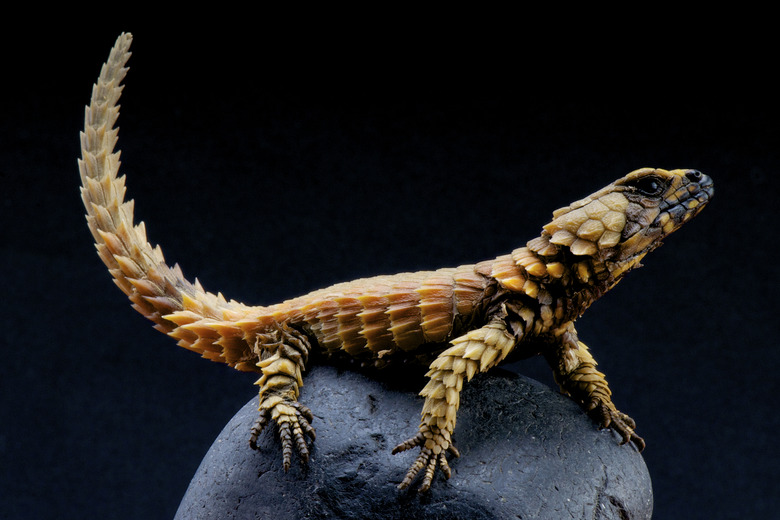How To Care For A Jones Armadillo Lizard
Jones armadillo lizards (Cordylus jonesii) are a relatively easy species to maintain, as long as you provide them with a suitable habitat, the proper environmental conditions and plenty of tiny crickets. In many respects, the care of Jones armadillo lizards is similar to the care of other armadillo lizard species. Because armadillo lizards are only available as wild-caught individuals, you should have your veterinarian examine your newly acquired pets.
A Habitat Like Home
A Habitat Like Home
Jones armadillo lizards are relatively small lizards who reach about 6 inches in total length, so they do not need gigantic cages. A cage with 2 to 4 square feet of space is adequate for a mixed-sex pair or trio. Although a social species in the wild, it is important to avoid keeping more than one male in the same cage, as they may become hostile to one another. Unlike in their natural habitat where they can flee from aggressive conspecifics if necessary, subordinate males may suffer horrible wounds if unable to escape from aggressive cagemates. Always utilize a secure screened lid to keep your lizards from escaping.
Substrate and Furnishings
Substrate and Furnishings
Hailing from relatively arid habitats, Jones armadillo lizards require a dry substrate, such as sand. However, it is a good practice to keep one area in the cage damp to help facilitate shedding. Jones armadillo lizards are partially arboreal, and spend much of their time hiding under tree bark, so be sure to include plenty of climbing opportunities in their cage. Additionally, like almost all pet reptiles, armadillo lizards require plenty of secure hiding places. Cork bark works well for both applications — place it horizontally to offer hiding spaces and vertically to provide climbing structures.
Heating and Lighting
Heating and Lighting
Provide your armadillo lizards with proper temperatures by placing a heat lamp at one end of the cage. Use a digital thermometer to measure the temperatures directly under the heat lamp, and at the far side of the cage. Adjust the heat lamp wattage until the basking spot is approximately 95 to 105 degrees Fahrenheit and the opposite side of the cage is in the high 70s to low 80s. Additionally, provide your lizards with a full-spectrum bulb to provide the ultraviolet radiation necessary for their health. Leave the lights on for about 12 hours each day, and turn them off at night. Nighttime temperatures can drop as low as 70 degrees without cause for concern.
Food and Water
Food and Water
Your armadillo lizard's staple diet should be comprised primarily of crickets. Feed them four to five times per week; each meal should consist of as many crickets as they will consume in about five minutes. Be sure to offer crickets of the appropriate size to avoid causing health problems for your lizard — crickets should be no longer than the width of your lizard's mouths. Keep a small, shallow water dish in the cage at all times.
